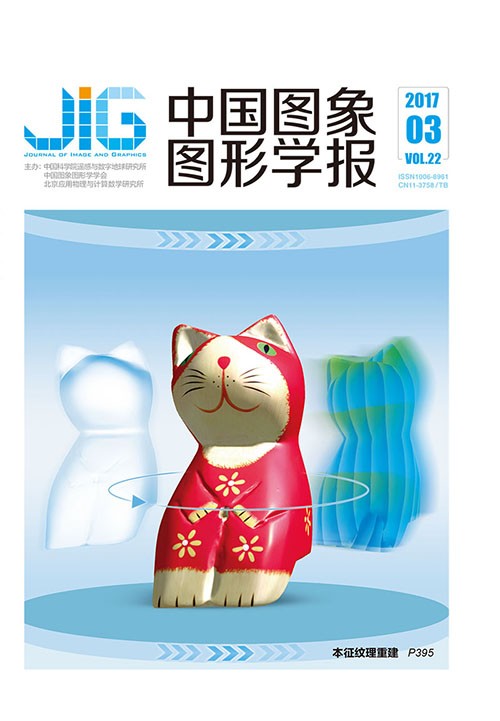
引入欧氏距离的各向异性扩散相干斑抑制
摘 要
目的 相干斑噪声严重影响SAR影像解译。抑制相干斑同时,获取较好的边缘保持效果始终是相干斑抑制的重点。针对该问题,提出一种引入欧氏距离的各向异性扩散(EDAD)相干斑抑制方法。方法 EDAD算法以P-M模型与SRAD算法为基础,利用邻近像素间区域欧氏距离代替原有边缘检测算子,自适应区分同质区与异质区,有效构造各向异性扩散系数,完成相干斑抑制。结果 运用EDAD算法与现存各向异性扩散算法对截取的两景TanDEM-X影像进行试验研究并比较各类算法的评估参数。EDAD算法的等效视数分别为3.996与5.859,均高于其他算法,体现优越的相干斑抑制能力;EDAD算法相干斑抑制前后比值影像的均值分别为0.999与1.001,方差分别为0.270与0.269,较其他算法均更接近理想值1与0.273,展现更优边缘保持与相干斑抑制能力。结论 本文算法可有效提高边缘检测能力,获取更优相干斑抑制效果。经验证,对分布较散的弱相干斑区域与分布较集中的强相干斑区域均有较好适用性。
关键词
Speckle reduction by Euclidean distance anisotropic diffusion
Guo Fengcheng1,2, Li Canhai2, Li Zongchun1, Wang Huabin2(1.Geospatial Information institute, Information Engineering University, Zhengzhou 450001, China;2.Satellite Surveying and Mapping Application Center, National Administration of Surveying, Mapping and Geoinformation, Beijing 100048, China) Abstract
Objective Synthetic aperture radar (SAR) image interpretation is an important aspect of SAR processing. Speckle noises proliferate in SAR images. Given that speckles cause problems with the interpretation of SAR images, speckles must be reduced to obtain high-quality images in SAR follow-up processing. Edge preservation is also a crucial aspect to consider. However, these tasks are inconsistent. Therefore, an efficient algorithm is needed to solve this problem. To achieve speckle reduction and preserve edges, we propose speckle reduction based on Euclidean distance anisotropic diffusion.Methods The main model of the proposed method of speckle reduction is based on SRAD method. SRAD is a modified P-M method, which can reduce additive noise. However, speckle noise is multiplicative noise. The modified P-M method, SRAD, can reduce multiplicative noise. Thus, anisotropic diffusion is successfully applied in SAR image processing. The current study proposed anisotropic diffusion based on a novel edge-detection method. First, to maintain edge information, edges were detected, which can be performed by Euclidean distance. The value of the Euclidean distance was lower than the set threshold. The pixel points that were used to compare the two sides were considered non-edge areas. Otherwise, the points belonged to the edge area. The threshold was set by calculating the mean of all Euclidean distances. Second, a new anisotropic diffusion coefficient function was established based on the results of the first step of the study. The coefficient function determined the scale of diffusion. The established mathematical model calculated the diffusing capacity of all pixel points in SAR images. Finally, the model of anisotropic diffusion was developed by following the SRAD method. The calculated results can update the intensity value of all pixel points in SAR images.Results Anisotropic diffusion exhibited new behaviors because Euclidean distance was used in Euclidean distance anisotropic diffusion. The accurate calculations of the mean value and variance of speckle noises were difficult to obtain and significantly influence the result of speckle reduction. The proposed method can avoid the estimation of the mean value and variance. This paper uses several anisotropic diffusion methods on two TanDEM-X images. The result showed that these methods can effectively reduce speckle noises when images contained weak speckle noises. However, the proposed method yielded better results when images contained strong speckle noises. Euclidean distance anisotropic diffusion can effectively maintain edge, unlike other methods.Conclusion A novel method to reduce speckles in SAR images is proposed. This method is categorized as anisotropic diffusion and is called Euclidean distance anisotropic diffusion. Euclidean distance anisotropic diffusion is a modified SRAD method based on Euclidean distance. It combines the SRAD model with Euclidean distance to effectively reduce speckles. The experimental result showed that the method can reduce speckle noise in areas with high and low concentrations of noise speckles.
Keywords
|



 中国图象图形学报 │ 京ICP备05080539号-4 │ 本系统由
中国图象图形学报 │ 京ICP备05080539号-4 │ 本系统由